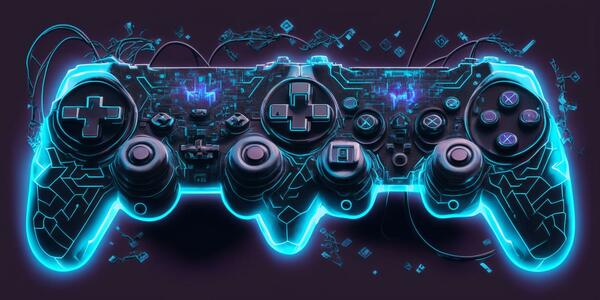The game development industry has experienced exponential growth, transforming from a niche hobby into a multi-billion dollar global phenomenon. Today’s games boast complex mechanics, stunning visuals, and immersive storylines, captivating audiences across the world. This blog will explore the multifaceted world of modern game development, emphasizing the importance of game development services, the rise of mobile game development, and the future of gaming technology.
The Evolution of Game Development
Game development has undergone significant evolution since the days of simple arcade games. The journey from pixelated characters and basic mechanics to today’s high-definition graphics and intricate gameplay has been remarkable. Early game development was often a one-person effort, but modern game development typically involves large teams of specialists, including programmers, artists, writers, and designers. These teams work collaboratively to create complex and engaging games that meet the high expectations of today’s gamers.
The Role of Game Development Services
Game development services are essential in bringing creative visions to life. These services encompass a wide range of activities, from initial concept development to final deployment. Here are some key components:
Concept Development: This stage involves brainstorming and refining ideas. It includes defining the game’s genre, storyline, characters, and core mechanics.
Game Design: Designers create the game’s architecture, including level design, user interface, and gameplay mechanics. They focus on creating a balanced and engaging experience for players.
Programming: Programmers write the code that brings the game to life, handling aspects like graphics, physics, artificial intelligence, and networking.
Art and Animation: Artists and animators create the visual elements of the game, from character designs to environments and special effects. Their work is crucial for creating an immersive and visually appealing game world.
Testing and Quality Assurance: Testers play the game extensively to identify and fix bugs, ensuring a smooth and enjoyable experience for players. This stage is vital for maintaining the game’s quality and playability.
Deployment and Support: Once the game is developed and tested, it is deployed to various platforms. Post-launch support includes updates, patches, and customer service to address any issues that players might encounter.
The Rise of Mobile Game Development
Mobile game development has become a dominant force in the gaming industry. With the widespread use of smartphones and tablets, mobile games have become increasingly popular. These games are accessible, convenient, and cater to a broad audience, from casual players to hardcore gamers.
Developing mobile games requires a unique set of skills and considerations. Developers must optimize games for different screen sizes, touch controls, and varying hardware capabilities. Performance is crucial, as mobile devices have limited resources compared to PCs and consoles. Successful mobile games like “Angry Birds,” “Clash of Clans,” and “Pokémon GO” have demonstrated the potential of mobile gaming to engage millions of players worldwide.
The Future of Game Development
The future of game development looks promising, with several emerging technologies set to revolutionize the industry. Here are some trends to watch:
Virtual Reality (VR) and Augmented Reality (AR): VR and AR are transforming the gaming experience by providing immersive and interactive gameplay. VR offers players a fully immersive environment, while AR overlays digital elements onto the real world, creating unique gaming experiences. Games like “Beat Saber” (VR) and “Pokémon GO” (AR) showcase the potential of these technologies.
Artificial Intelligence (AI): AI is enhancing game development in various ways, from creating more realistic and challenging opponents to procedural content generation. AI can also be used to personalize gaming experiences based on player behavior and preferences.
Cloud Gaming: Cloud gaming allows players to stream games over the internet, eliminating the need for powerful hardware. This technology makes high-quality gaming accessible to a broader audience and enables seamless gameplay across different devices. Services like Google Stadia and NVIDIA GeForce NOW are at the forefront of this trend.
Cross-Platform Play: Cross-platform play is becoming more common, allowing players on different devices to play together. This trend is breaking down barriers between platforms and creating more inclusive gaming communities.
Blockchain Technology: Blockchain is being explored for its potential to create secure and transparent in-game economies. It can enable true ownership of digital assets and facilitate decentralized marketplaces for trading in-game items.
Conclusion
Modern game development is a dynamic and rapidly evolving field that offers endless opportunities for creativity and innovation. From the initial concept to the final deployment, game development services play a crucial role in bringing games to life. The rise of mobile game development has expanded the reach of gaming, making it more accessible than ever before. As emerging technologies like VR, AR, AI, cloud gaming, and blockchain continue to evolve, the future of game development promises even more exciting possibilities. By staying at the forefront of these trends, developers can create engaging and immersive experiences that captivate players around the world.




